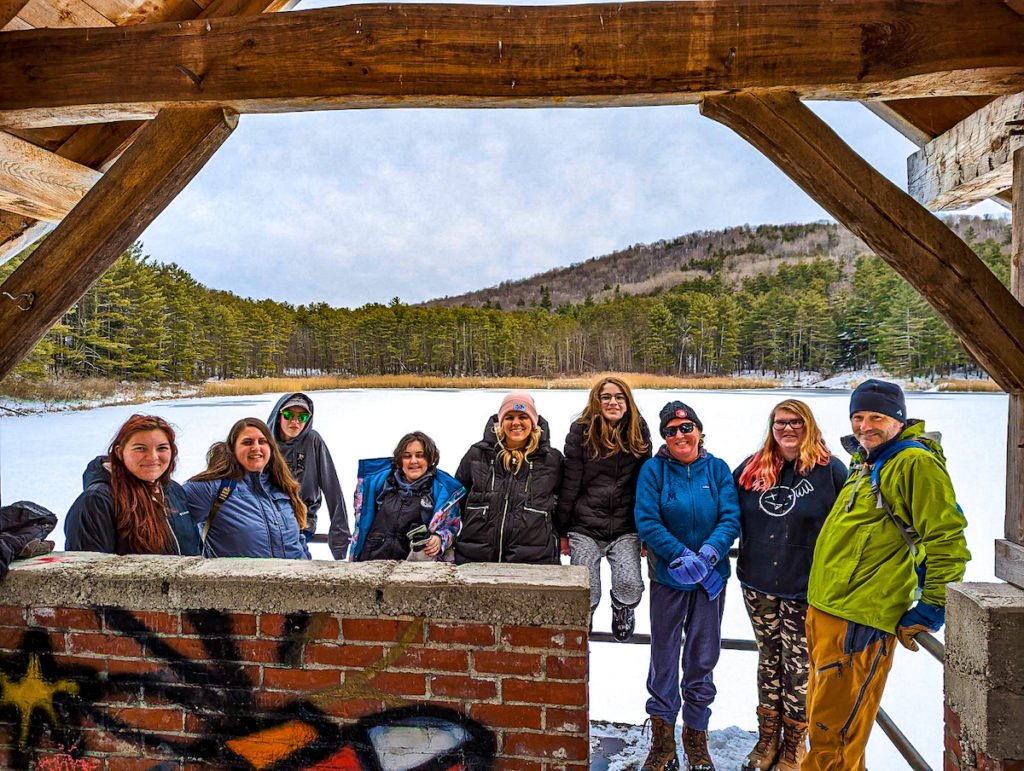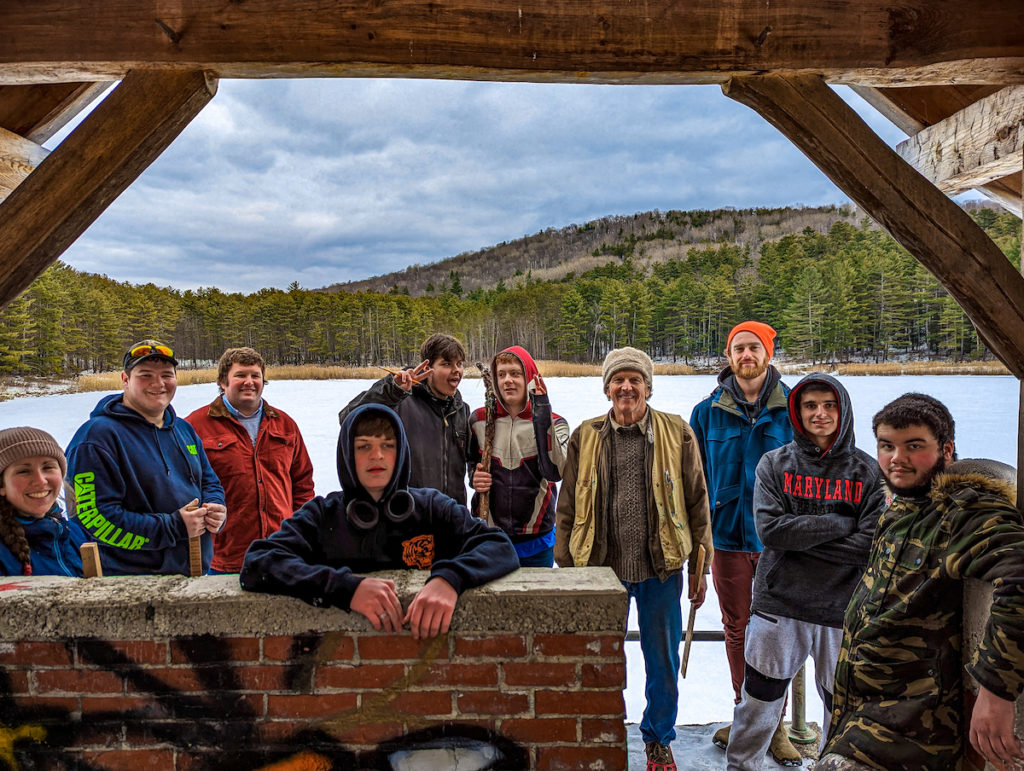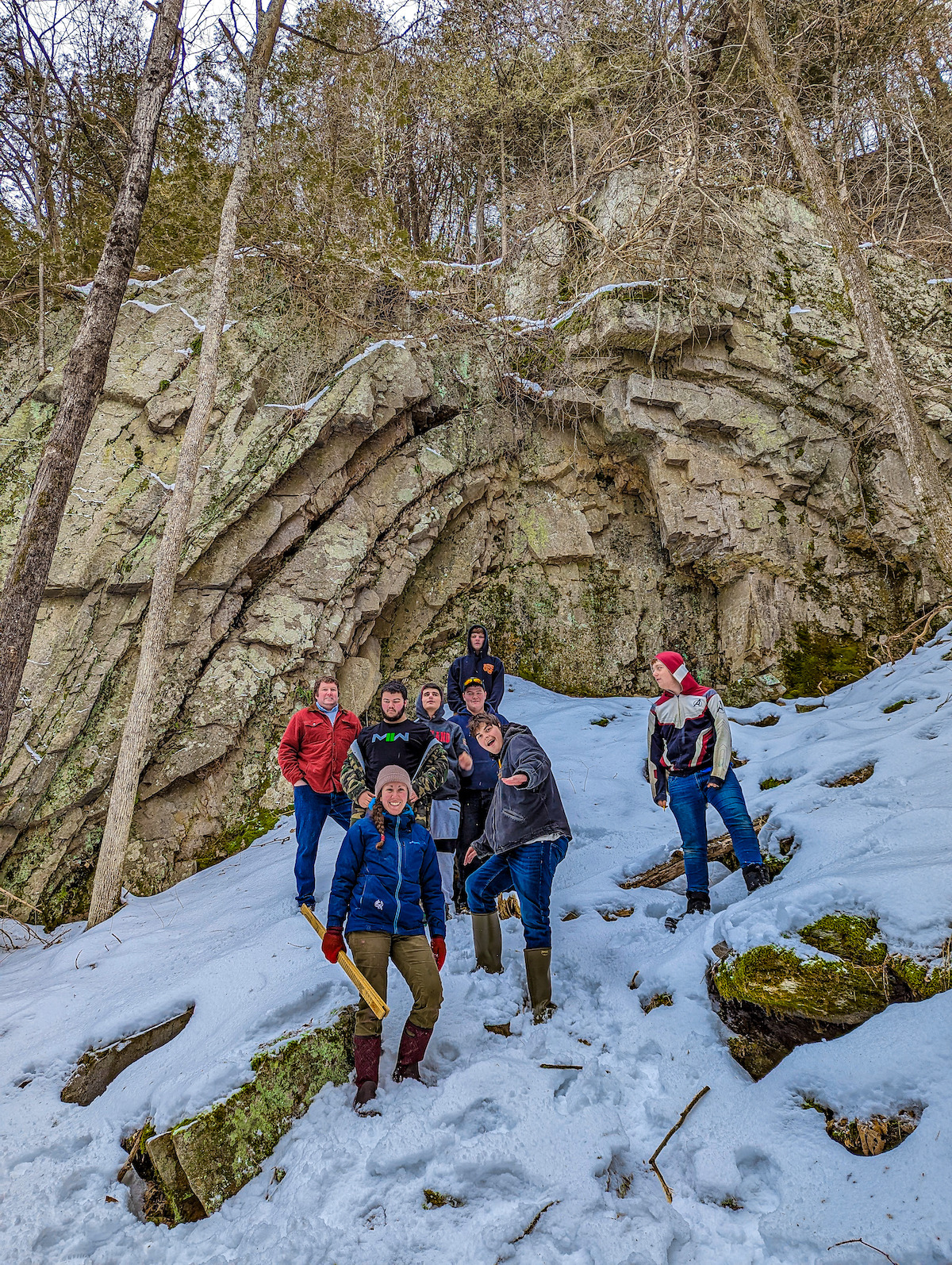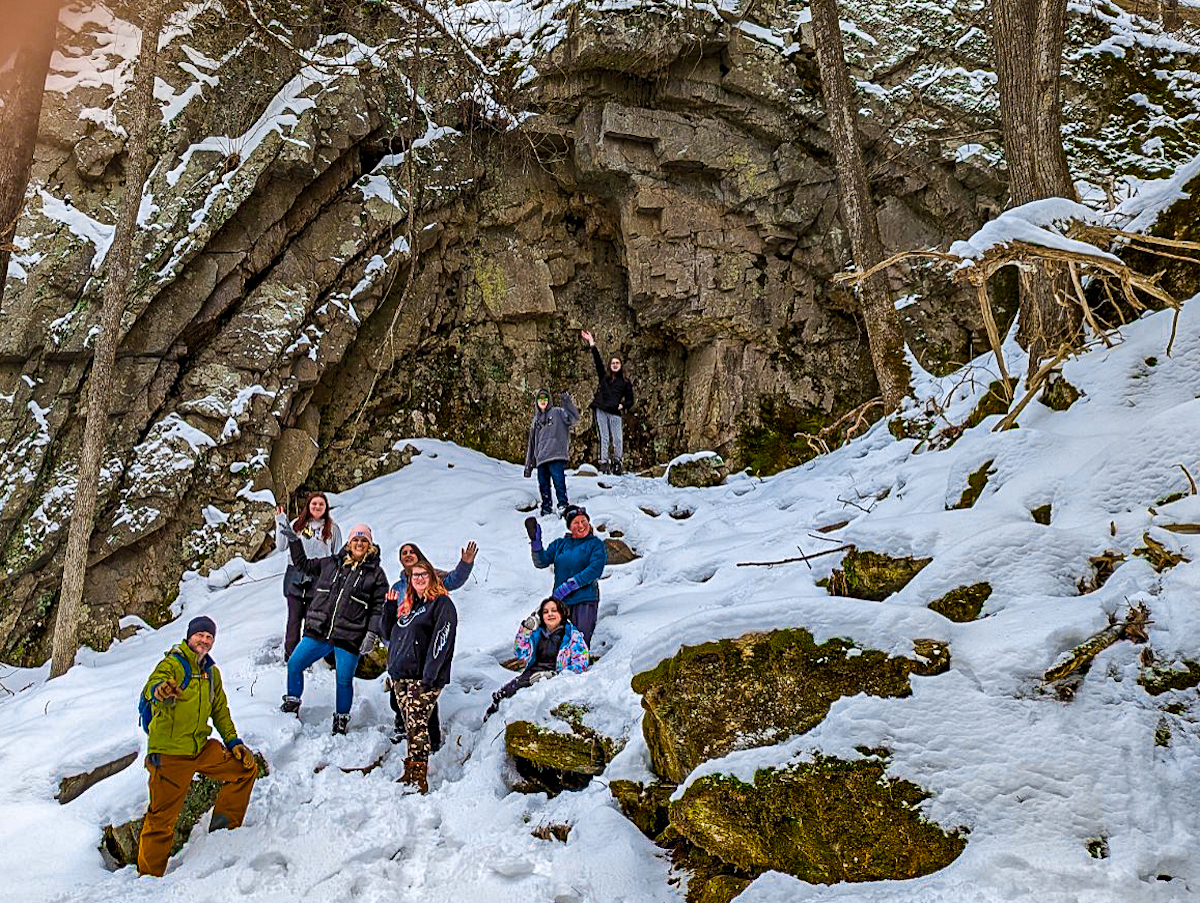By Rebecca Burns, Expeditionary Programs Manager
Since 1999, the Champlain Longboats program at Lake Champlain Maritime Museum has built dozens of rowing gigs and several whaleboats with local middle and high school students. This program involves the students in every aspect of boat building, a hands-on view of boat building from tree to boat.
All the lumber for the handcrafted wooden boats comes from local forests and is later milled at the Museum. As part of their boat building curriculum, each year boat building students take a field trip to a local forest with Vermont Family Forests’ (VFF) founder and director, David Brynn. VFF is a non-profit organization that applies forest-centered conservation and promotes sustainable forestry in Vermont.
This year, our boat building students from the Addison Consortium Program and Middlebury Union High visited the Watershed Center in Bristol with VFF where they learned the basis of the meaning of “from tree to boat” and how to select a tree for the Museum’s next boat.


During this year’s field trip, Brynn guided students through the network of trails on the Watershed Center’s waterworks property and explained how to pick appropriate trees to be harvested for the boats. The factors students learned to consider when picking which trees to harvest include the species of tree, the presence of branches, and the straightness of the tree.
The Champlain Longboats rowing gigs are primarily made of white pine and white oak. These trees are plentiful in Vermont and are known to be durable and rot resistant. Boat builders seek trees with few branches because knots left in the trunk will limit the integrity of the boat. A tree that grows straight in height is also ideal for boat building to maximize the length of each plank. A Biltmore stick can be used to measure the diameter and height of the tree and to determine the volume of available lumber. Each student practiced collecting measurements using a Biltmore stick to determine a tree worth harvesting for boat building. In the spring, as part of the boat building program, the students will also assist in milling the wood for next year’s boat using a portable sawmill that is brought to the Museum.







The Watershed Center includes over 1,000 acres of wetlands, natural forested communities, and a reservoir. Formerly the reservoir for the city of Vergennes, the waterworks property at the center is used for educational and recreational purposes. The property’s mix of shrubland, mature woods, pond, and stream attract a wide variety of bird species (don’t miss their annual Warbler Warm-Up each May!). While exploring the snow-covered forest, the students discovered a geological feature called an anticline. This impressive feature is a folded rock formation with curved layers resembling an arch. Before the formation of an anticline, the surrounding land was flat. Over several million years, the pressure of opposing rock layers squished and raised the center of the formation leaving the edges to stay low. This is how the arch shape of an anticline is formed.


Back in the boat shop, the group of students have been hard at work installing planks on the new four-oared rowing gig. The planks are individually fit from white pine boards and are secured on the boat using a traditional method called clench nailing. During this process the students work in teams of two where one person hammers a copper tack into the plank and the other person holds a clenching iron over the point of the tack to fold it into the plank. The next step in the boat building process will be the installation of ribs, which provide strength and structure to the hull of the boat. The new four-oared gig is scheduled to be launched at the Museum in late May 2023.
The Champlain Longboats program is supported by a community of donors, educators, staff, and parents.

